The title is a most terrible play on words. The pattern however draws strong influence from a pattern with a fine pedigree (Park Shrimp) which is of course a very proven fish catcher. Tied on these tubes it has proven very successful for me. My intention is that this continues this spring.
The Dressing
Tube: Eumer 15mm brass tube and cone set -silver.
Thread: Any
Rear hackle: doubled yellow dyed hen saddle
Wing Support: Yellow dyed calf tail
Underwing: Orange dyed Arctic fox and orange dyed Arctic runner (optional) overlaid with 3 doubled strands of fine mother of pearl Krystalflash. This is then overlaid with yellow dyed Arctic fox and Arctic runner (optional). This is then overlaid with strands of fine pearl tinsel.
Wing: Black dyed Arctic fox.
Front hackle: Dark orange hen saddle tied doubled.
Cheeks: Jungle cock
Tying Method
Step 1: The Eumer cone system comes in 4 parts. Liner tube, brass body, junction tube and cone.
Step 2: They are very simple to assemble but I will explain for those of you who have never used one. The liner tube fits into the brass body and the end off the liner is heated with a cigarette lighter.
Step 3: The junction tube is then pushed onto the tube and locates against the shoulder at the rear of the tube.
Step 4: The assembly is then mounted onto your preferred mandrel. I use a Eumer needle.
Step 5: Attach tying thread to liner tube and wind for approximately 4 turns.
Step 6: Prepare a yellow dyed hen saddle hackle as shown.
Step 7: Tie the yellow hackle to the liner tube by the tip.
Step 8: Double the hackle fibres and wind.
Step 9: Tie in a bunch of yellow dyed calf tail fibres as a wing support.
Step 10: Overlay the calf tail with a combed bunch of orange dyed Arctic fox and or Arctic runner.
Step 11:Trim the excess and tie in 3 doubled lengths of fine mother of pearl Krystalflash
Step 12: Overlay the orange combed 'stuff' with yellow dyed combed Arctic fox and or Arctic runner
Step 13: Overlay the yellow 'stuff' with horns of fine pearl tinsel.
Step 14: Tie in a wing of black dyed combed Arctic fox.
Step 15: Tie in an hot orange dyed hen saddle hackle by the tip.
Step 16: Double and wind the hackle.
Step 17: A generous amount of saliva applied the hackle -YEUK!!!!!! Will encourage it to behave itself when tying in the jungle cock cheeks. There is absolutely no need to wind and wind and wind thread like you have a vast abundance of it. Good thread control is in my opinion one of the central foundations of good fly dressing.
Step 18: I have witnessed extremely well dressed fly patterns dressed by extremely able fly dressers where the cone simply will not seat correctly because too much thread has been applied. If thread has not been wound like a crazy man then we now have the luxury of having to wind thread to build up a seat for the cone. This in my own opinion is far preferable to having a cone that sits 'on the piss' or is wobbly.
Step 19: Whip finish and apply a small amount of waterproof superglue gel.
Step 20: Push on the cone.
Step 21: Trim the excess liner tube and melt the end with a cigarette lighter. Push a needle point through it to open up the melted plastic.
Step 22: Happy fishing
The Dressing
Tube: Eumer 15mm brass tube and cone set -silver.
Thread: Any
Rear hackle: doubled yellow dyed hen saddle
Wing Support: Yellow dyed calf tail
Underwing: Orange dyed Arctic fox and orange dyed Arctic runner (optional) overlaid with 3 doubled strands of fine mother of pearl Krystalflash. This is then overlaid with yellow dyed Arctic fox and Arctic runner (optional). This is then overlaid with strands of fine pearl tinsel.
Wing: Black dyed Arctic fox.
Front hackle: Dark orange hen saddle tied doubled.
Cheeks: Jungle cock
Tying Method
Step 1: The Eumer cone system comes in 4 parts. Liner tube, brass body, junction tube and cone.
Step 2: They are very simple to assemble but I will explain for those of you who have never used one. The liner tube fits into the brass body and the end off the liner is heated with a cigarette lighter.
Step 3: The junction tube is then pushed onto the tube and locates against the shoulder at the rear of the tube.
Step 4: The assembly is then mounted onto your preferred mandrel. I use a Eumer needle.
Step 5: Attach tying thread to liner tube and wind for approximately 4 turns.
Step 6: Prepare a yellow dyed hen saddle hackle as shown.
Step 7: Tie the yellow hackle to the liner tube by the tip.
Step 8: Double the hackle fibres and wind.
Step 9: Tie in a bunch of yellow dyed calf tail fibres as a wing support.
Step 10: Overlay the calf tail with a combed bunch of orange dyed Arctic fox and or Arctic runner.
Step 11:Trim the excess and tie in 3 doubled lengths of fine mother of pearl Krystalflash
Step 12: Overlay the orange combed 'stuff' with yellow dyed combed Arctic fox and or Arctic runner
Step 13: Overlay the yellow 'stuff' with horns of fine pearl tinsel.
Step 14: Tie in a wing of black dyed combed Arctic fox.
Step 15: Tie in an hot orange dyed hen saddle hackle by the tip.
Step 16: Double and wind the hackle.
Step 17: A generous amount of saliva applied the hackle -YEUK!!!!!! Will encourage it to behave itself when tying in the jungle cock cheeks. There is absolutely no need to wind and wind and wind thread like you have a vast abundance of it. Good thread control is in my opinion one of the central foundations of good fly dressing.
Step 18: I have witnessed extremely well dressed fly patterns dressed by extremely able fly dressers where the cone simply will not seat correctly because too much thread has been applied. If thread has not been wound like a crazy man then we now have the luxury of having to wind thread to build up a seat for the cone. This in my own opinion is far preferable to having a cone that sits 'on the piss' or is wobbly.
Step 19: Whip finish and apply a small amount of waterproof superglue gel.
Step 20: Push on the cone.
Step 21: Trim the excess liner tube and melt the end with a cigarette lighter. Push a needle point through it to open up the melted plastic.
Step 22: Happy fishing


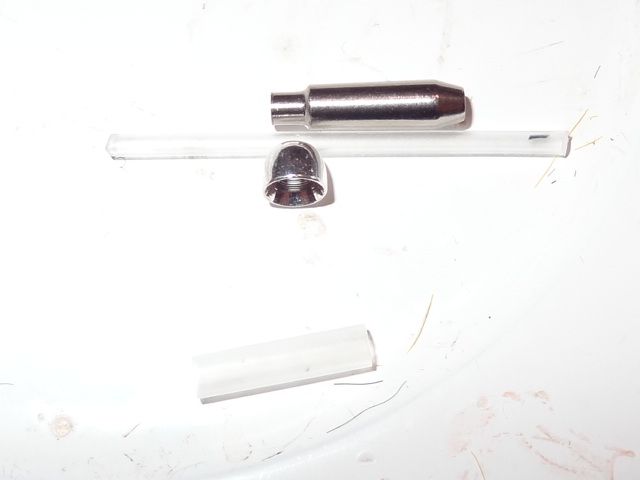
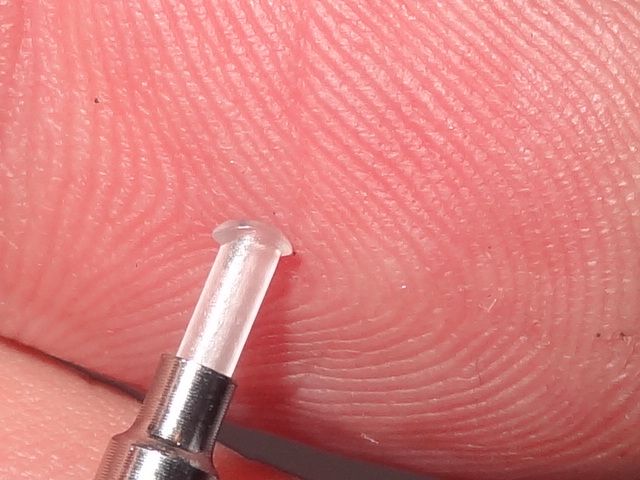
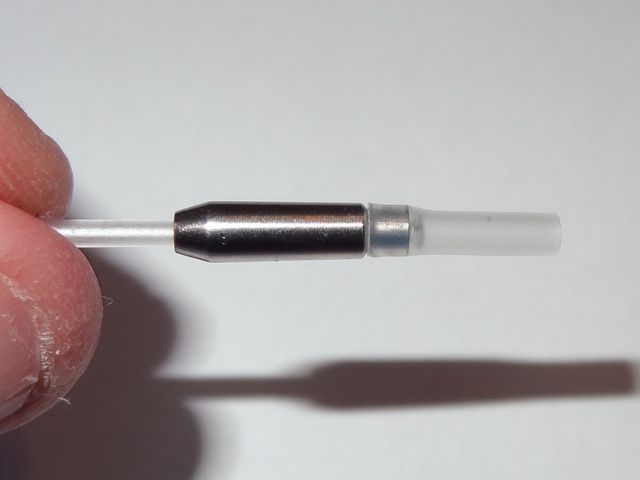

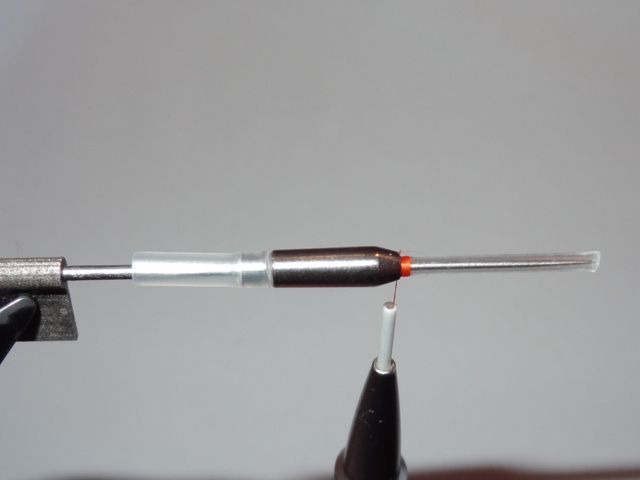
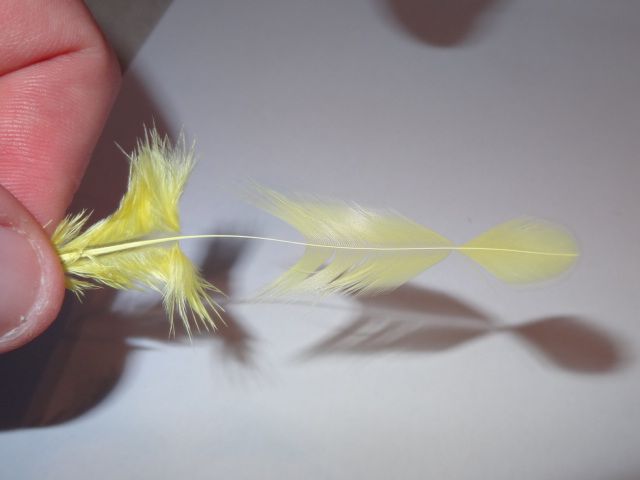
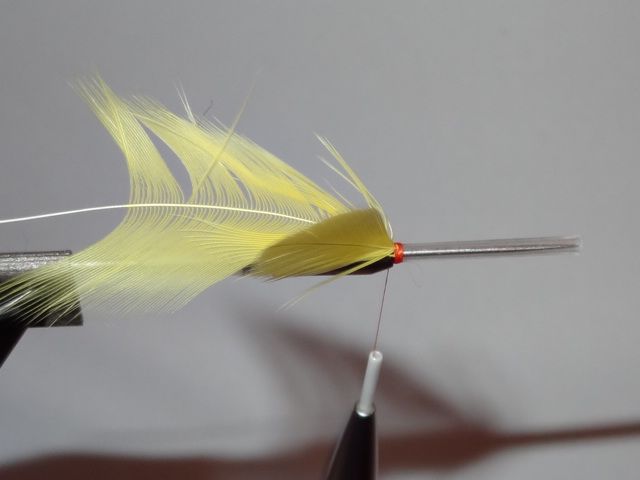


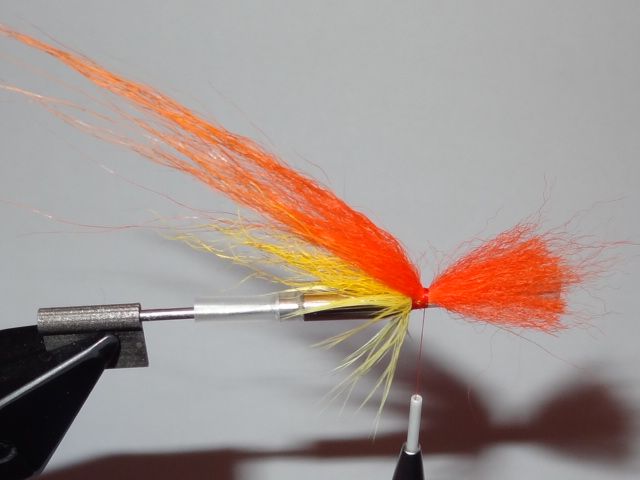
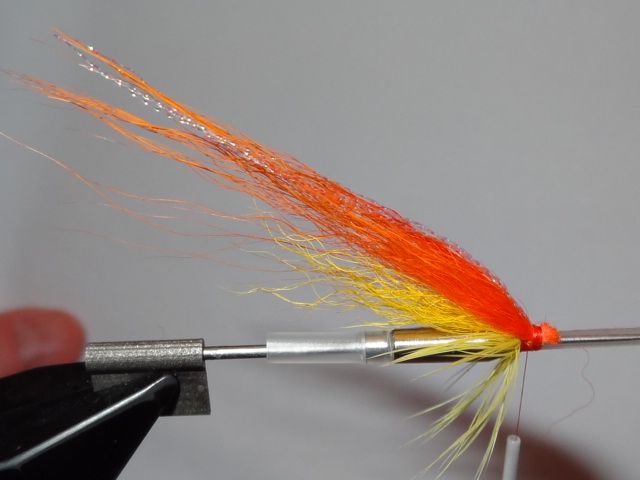
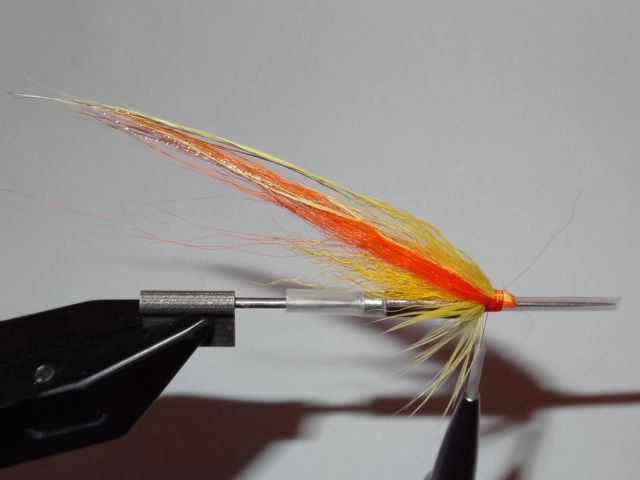
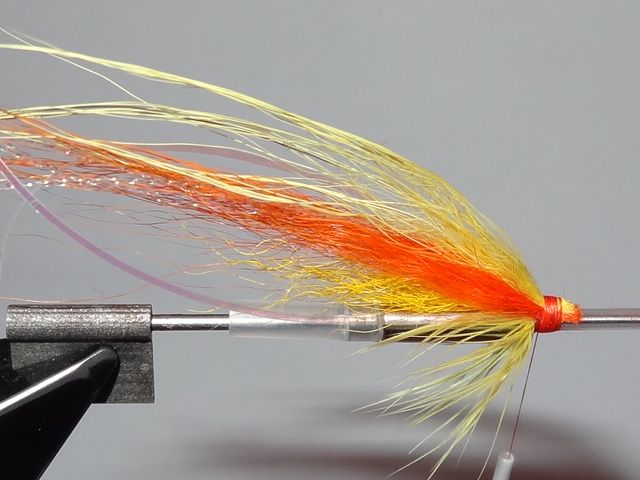

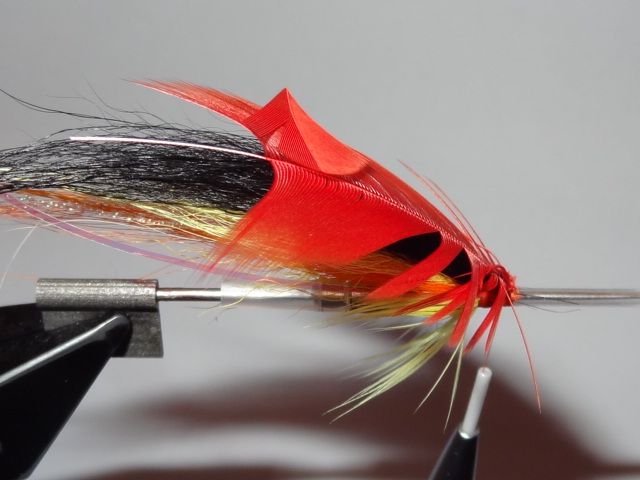
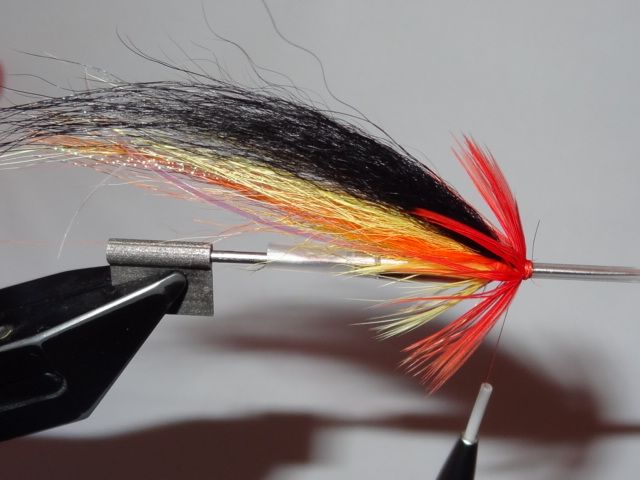

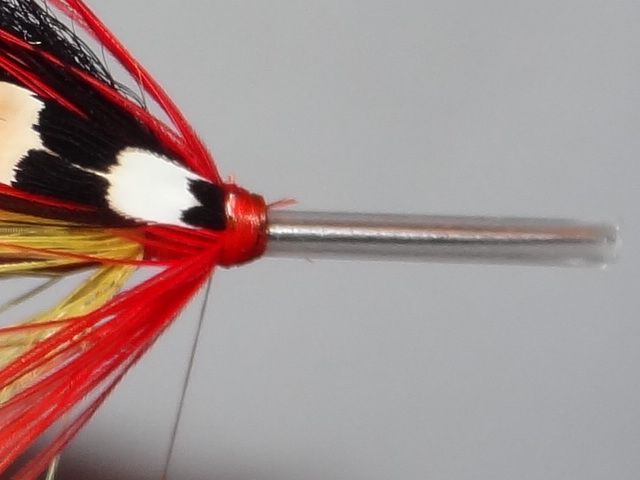
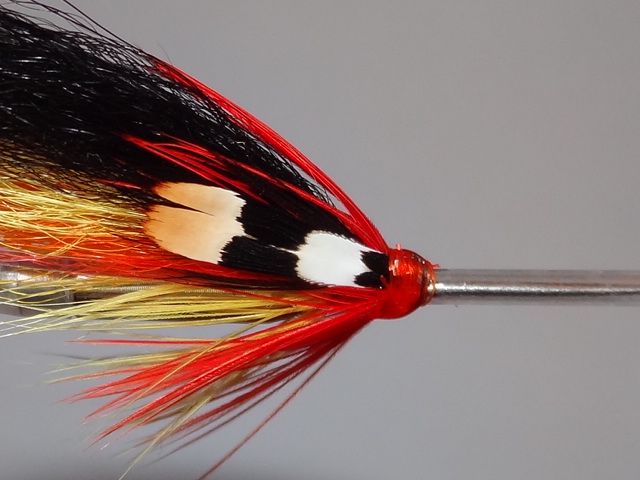
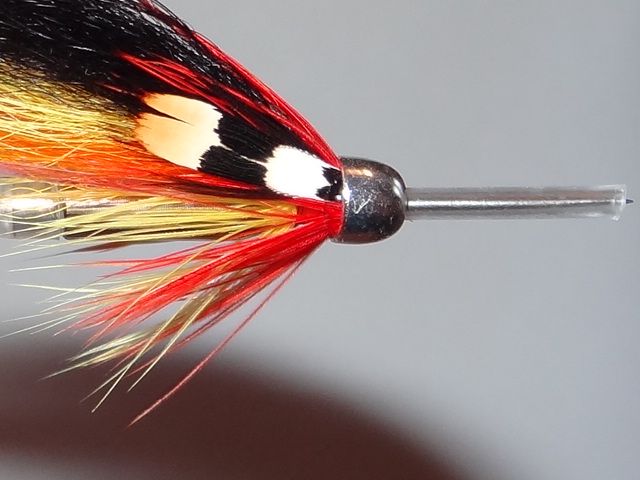
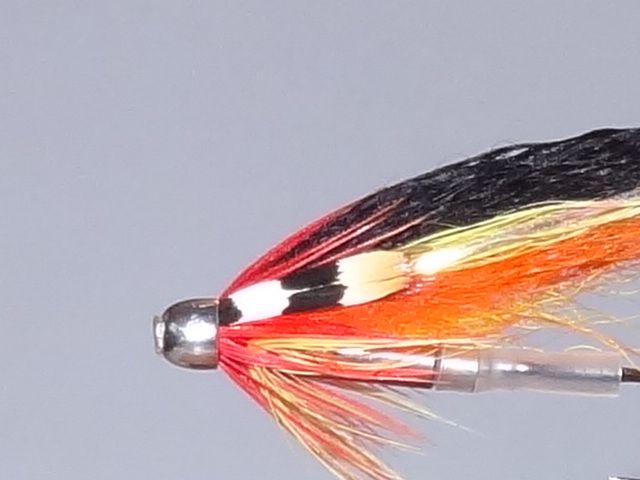

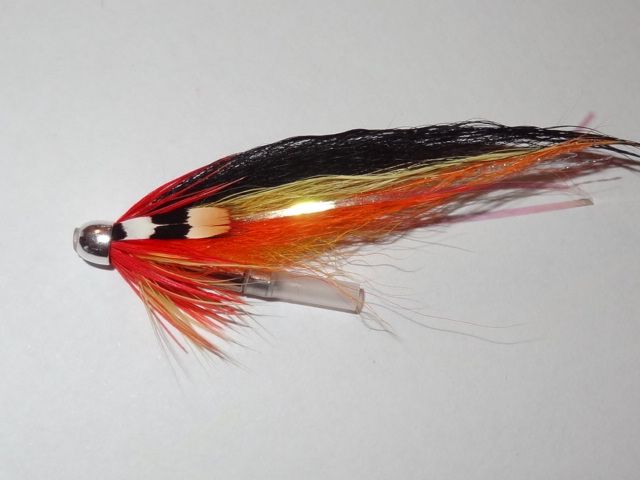
Comment